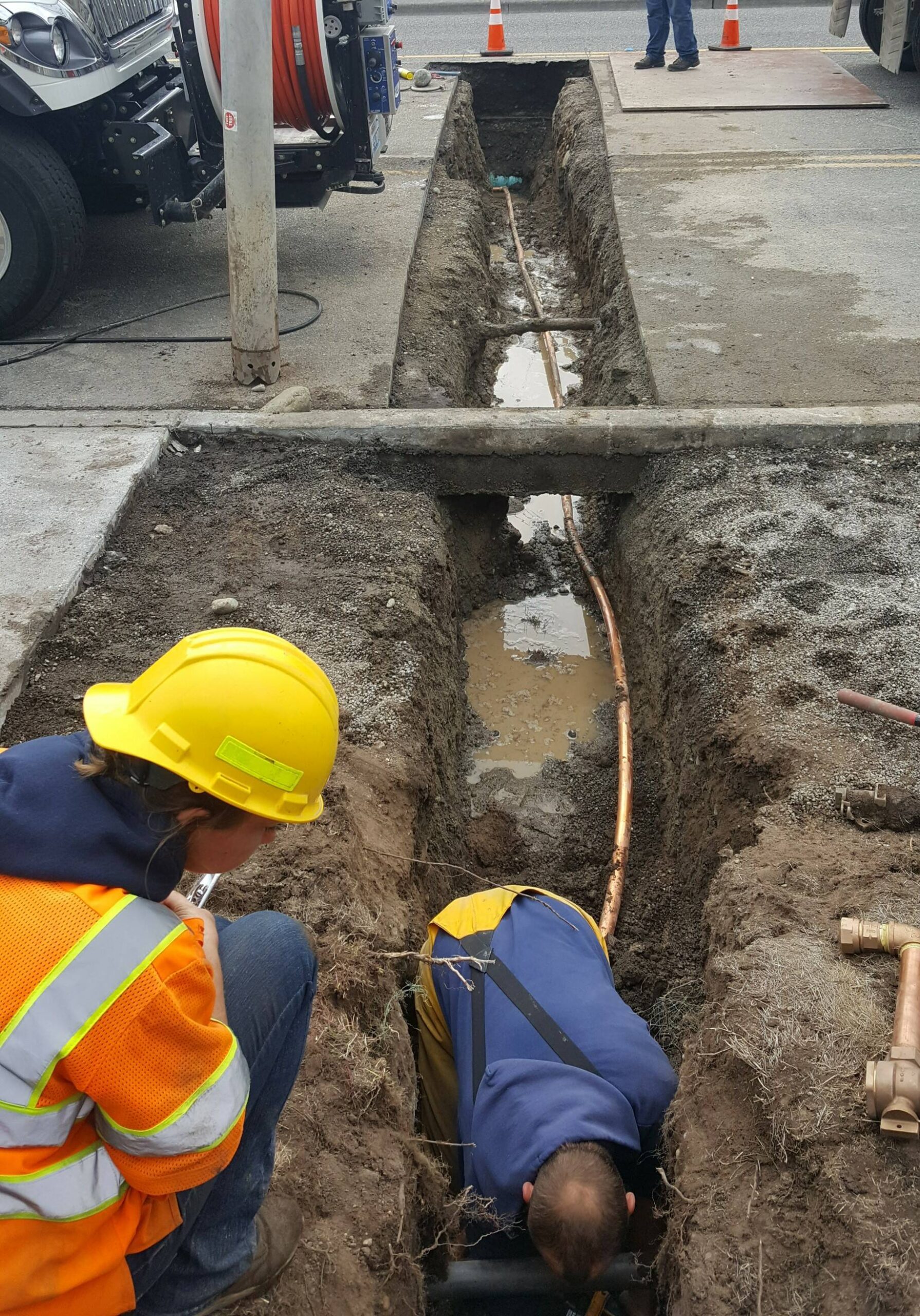Oak Harbor staff are warning council members and the public that the city is in a state of infrastructure emergency.
Director of Public Works Steve Schuller told the Oak Harbor City Council during a workshop meeting Wednesday that city water mains, sewer lines, storm drains, streets, sidewalks, buildings and other types of infrastructure are in a “severe state of decay,” and the city may need to partner with private developers to afford the cost of redevelopment.
Much of the city’s development took place following World War II, Schuller said, making some of the oldest existing infrastructure at least six or seven decades old. Buildings, pipes and roads in the oldest parts of Oak Harbor are nearing the end of their useful life, he said.
Recently, a rusty water main gave out near the post office, causing public works crews to have to make repairs in the middle of the night. Schuller said he expects similar incidents to take place all over the city in the coming years.
The area most at risk is located in the triangle formed by Highway 20, Midway Boulevard and Pioneer Way, where some of the oldest infrastructure in the city is located.
Schuller said when the private industry developed neighborhoods in the city, the developers paid for the associated infrastructure, which was then dedicated to the city. Now that it is time for repairs and replacements, the city is responsible for maintenance of these resources.
But the improvements that will be necessary over the next few decades come with an astronomical price tag. To make the needed upgrades to the city’s water system alone will cost at least $100 million, Schuller estimated, and that doesn’t account for sewer or storm line rehabilitation, replacement of seismically unstable public facilities, road or sidewalk maintenance or a number of other projects the city will need to undertake to avoid falling into disrepair.
The cost is too great for taxpayers, Schuller said.
“What we want to do is partner with private development, just like we did when it was first built,” he said in an interview.
Private developers, he said, could come in and redevelop areas in need of attention, shouldering some of the costs. Redevelopment also offers the city opportunities to plan for the needs and vision of rising generations. For example, Schuller said mixed-use zoning, allowing residences to exist above commercial spaces, would increase walkability and is popular among younger residents.
The first steps toward redevelopment and repairs will be to conduct community outreach and assemble a task force of stakeholders. Schuller also said the city should put out a request for proposals from consultants to assist with this and future phases of downtown revitalization and redevelopment.
Council members discussed the need for a thorough public education and community outreach process. Councilmember Jim Woessner said that while the city may set some lofty goals in response to the urgency of the infrastructure problem, it is important to achieve smaller steps along the way and deliver results to the public.
“Let’s make sure that we understand, we’re dreaming big, then we’re coming up with ways to get there,” he said.
Councilmember Bryan Stucky added that it is often difficult to solicit public participation, and even more difficult to help community members visualize the issue.
“It’s hard to tell people, ‘We need money to fix this pipe that no one can see,’” he said.
The council did not take any formal action at the June 28 meeting.



